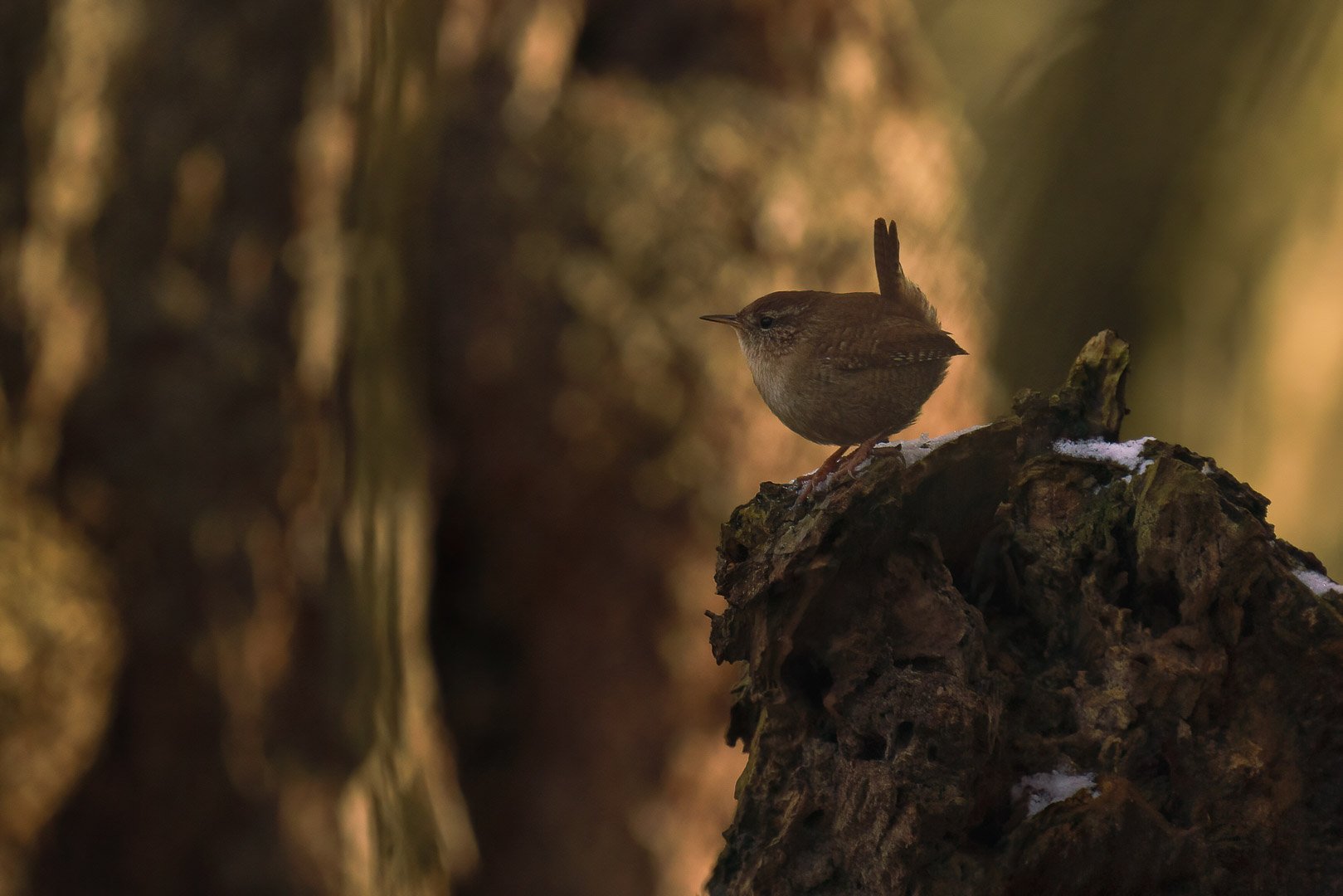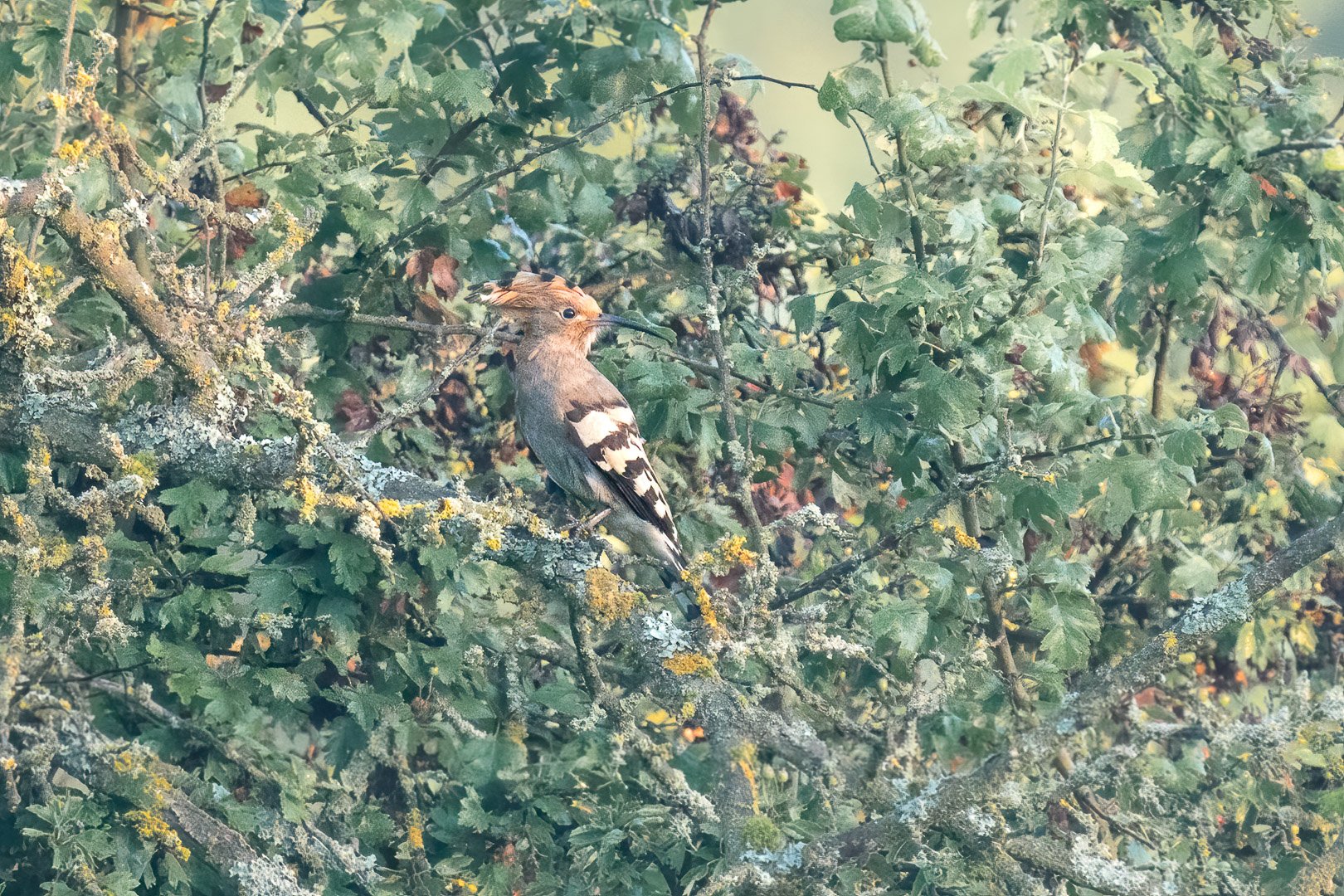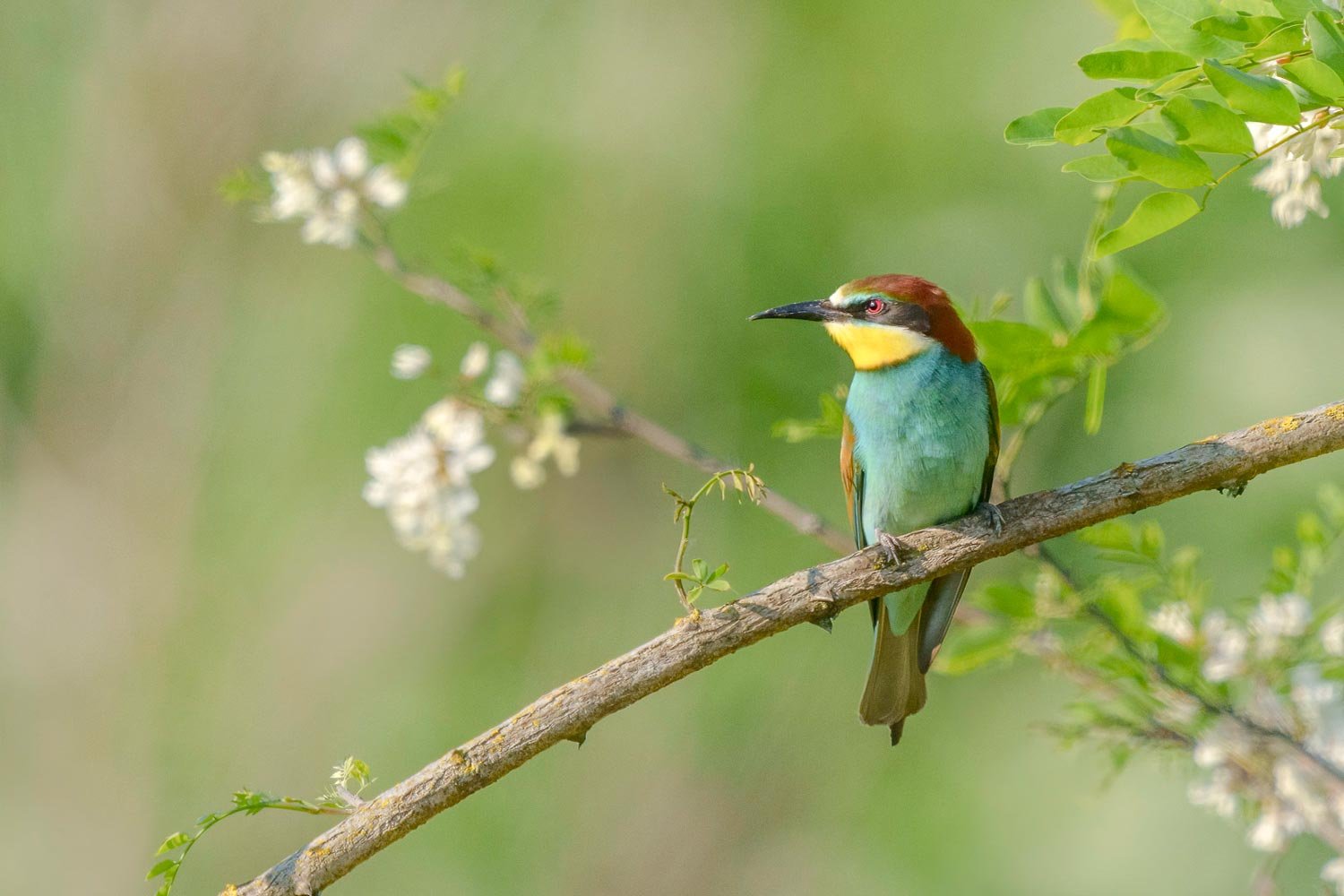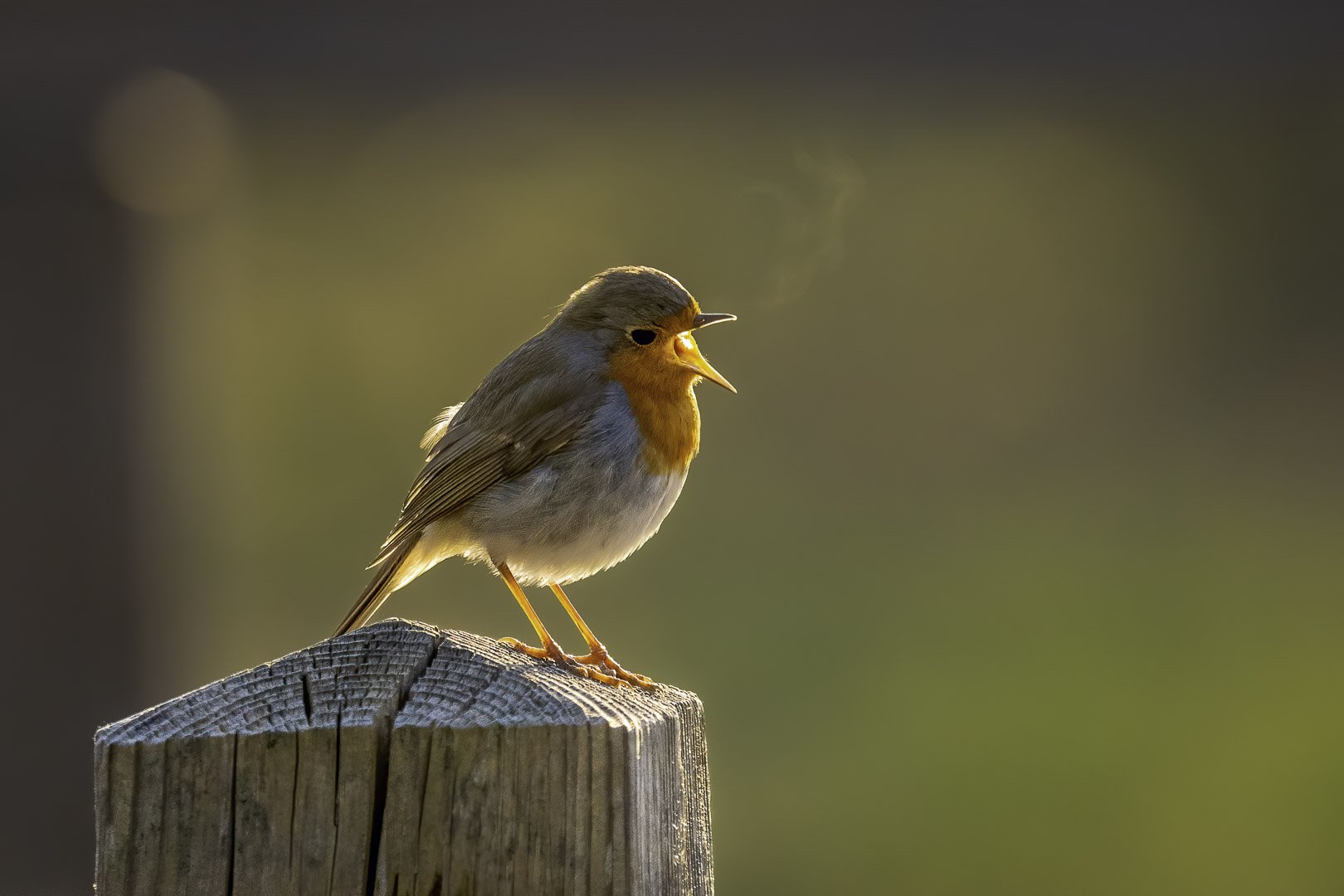Brown birds in Germany
Discover the Wren, the Hoopoe, and the White-Tailed Eagle
Bird watching and photography in Germany offer fascinating insights into a diverse bird landscape. Today, I want to introduce you to three remarkable bird species: the small, energetic Wren with its unmistakable voice and easily overlooked brown plumage, the medium-sized, strikingly light brown Hoopoe, and Germany's national emblem, the large, majestic White-Tailed Eagle with its amber eyes, brown feathers, and white tail feathers. Each of these bird species adds a unique charm to Germany's natural landscapes.
Small Brown Birds: The Wren (Troglodytes troglodytes)
The Wren is familiar to people in gardens and forests with its small size and super loud, melodic song. Despite its tiny stature, this brown bird is known for its lively presence.
Habitat and Distribution
Wrens are widespread throughout Germany and are commonly found in forests, gardens, and hedgerows. They prefer dense underbrush where they can easily hide and search for insects. Often, you will hear their strong song long before you see them darting through the bushes.
Conservation Status
Currently, the wren is not considered endangered. It has a stable population across Europe, thanks to its adaptability to various habitats. This resilience makes the wren a frequent but delightful encounter in many parts of Germany.
Behavior and Characteristics
Wrens are very active and are typically seen flitting through bushes and low shrubs. Their short, upright tails and quick movements are characteristic. Despite their small size, they are very territorial and defend their area energetically.
Special Behaviors or Traits
A remarkable trait of the wren is its powerful voice, which echoes through its territory, especially during the breeding season. The male builds several nests to attract a female.
Medium-Sized Brown Birds: The Hoopoe (Upupa epops)
The Hoopoe, with its distinctive feather crown and characteristic “oop-oop-oop” call, is one of the most visually impressive birds in Germany. Its appearance and call make it easily recognizable and a favorite among many bird watchers.
Habitat and Distribution
Hoopoes prefer open landscapes with short grass, such as orchards, vineyards, and meadows. They are migratory birds and are often seen during the breeding season in southern Germany. These areas provide ideal conditions for foraging and nesting.
Conservation Status
In Germany, the hoopoe population is considered endangered. Due to habitat loss, there are currently only about 800 to 950 breeding pairs. (As of 2022, NABU) Conservation efforts focus on preserving open landscapes and reducing pesticide use.
Behavior and Characteristics
Hoopoes are known for their unique foraging method, probing the ground with their long beaks to find insects and larvae. They also display a characteristic flight pattern with undulating, butterfly-like wing beats. Their feather crests are typically raised and lowered, emphasizing their striking appearance.
Special Behaviors or Traits
Hoopoes secrete a foul-smelling substance to protect themselves from predators. This secretion is typically used by brooding females or nestlings to deter predators from the nest. This behavior, along with their distinctive appearance, makes them a remarkable species.
Large Brown Birds: The White-Tailed Eagle (Haliaeetus albicilla)
The White-Tailed Eagle, also known as the Sea Eagle, is the largest bird of prey in Germany and Central Europe. Its impressive wingspan and majestic presence make it a symbol of wilderness and freedom. Seeing a White-Tailed Eagle in flight is a breathtaking experience.
Habitat and Distribution
White-Tailed Eagles are often found near large bodies of water such as lakes, rivers, and coastal regions. In Germany, they are particularly common in the north and northeast, especially around the Baltic Sea and the Mecklenburg Lake District. However, they can also be spotted in Bavaria if you're lucky.
Conservation Status
Once highly endangered, the White-Tailed Eagle has made a remarkable recovery thanks to extensive conservation efforts. Today, it is a success story of wildlife conservation in Europe, with steadily growing populations.
Behavior and Characteristics
White-Tailed Eagles are opportunistic hunters and scavengers. They prefer fish, which they catch from shallow waters, but they also feed on waterfowl, small mammals, and carrion. Their hunting technique involves grasping prey with their powerful talons, often after a dramatic stoop from the air.
Special Behaviors or Traits
A remarkable trait of the White-Tailed Eagle is its elaborate courtship behavior, which includes aerial acrobatics and synchronized flights with its partner. These displays strengthen the pair bond and are a spectacular sight to behold.
Conclusion
Germany's avian world is incredibly diverse, and each species plays an important role in the ecosystem. The Wren, the Hoopoe, and the White-Tailed Eagle are just a few examples of the fascinating brown bird species you can discover. By learning more about these birds and supporting conservation efforts, you help preserve Germany's natural heritage for future generations. So, next time you're outdoors, keep an eye out for these impressive birds and enjoy the rich biodiversity Germany has to offer.







